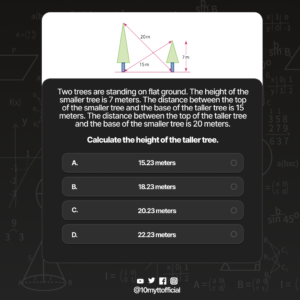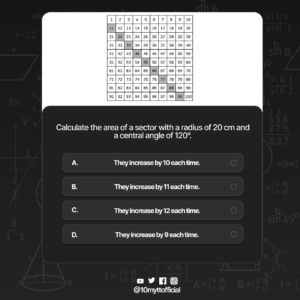Mathematics competitions are a thrilling way to put your skills to the test, but they can also be challenging. To tackle complex questions effectively and improve your chances of success, you need the right strategies. Here are the top 10 math problem-solving techniques that can give you an edge in your next competition.
1. Estimation
Estimation is a powerful technique that helps you quickly gauge whether an answer is reasonable. Instead of calculating every detail, use approximation to get a “ballpark” figure. For example, if a problem requires complex multiplication or division, round the numbers to simplify the math. Estimation is particularly useful in multiple-choice questions, where you can often rule out unlikely options.
2. Working Backward
When faced with a problem that seems hard to approach directly, try working backward from the answer or final condition. This technique is especially helpful in word problems where you know the end result but need to determine the initial value or earlier steps. Working backward is also useful for verifying answers by retracing your steps.
3. Pattern Recognition
Many math problems involve patterns, especially in sequences or geometry. Recognizing patterns allows you to predict future terms in a sequence or identify a rule governing the pattern. When solving problems involving shapes, number series, or even algebraic expressions, look for repetition or symmetry, as these often hint at an underlying pattern.
4. Elimination
In multiple-choice questions or when working through possibilities, elimination helps you narrow down your options. If certain choices or approaches don’t make sense, cross them off. This is particularly effective when time is limited. In some cases, eliminating impossible or illogical options can lead you directly to the answer or at least give you fewer possibilities to check.
5. Guess and Check
The guess-and-check method involves making an educated guess and then checking if it satisfies the problem conditions. This technique is often effective in problems with a limited number of potential answers. To use this strategy effectively, make logical guesses based on the question’s context, then verify each guess until you find the solution.
6. Divide and Conquer
Breaking down a complex problem into smaller, more manageable parts can make it much easier to solve. Analyze the problem to see if you can tackle it in steps, solving one part at a time. For example, in a multi-step word problem, solve each condition separately before combining them for the final answer. This approach reduces confusion and helps you stay organized.
7. Use Diagrams and Visuals
Drawing diagrams or visual representations can simplify problems, especially in geometry and word problems. Sketching shapes, using a number line, or drawing tables can help you organize information and identify relationships between elements. Visual aids are often instrumental in clarifying complex information and are a great tool for visual learners.
8. Write Down Known Information and Formulas
Start each problem by writing down all known values, variables, and relevant formulas. This helps you organize your thoughts and ensures you don’t overlook essential information. Writing down formulas and knowns is especially useful for long or wordy problems, where key details can easily get lost in the text.
9. Work Through Examples
If a problem resembles one you’ve seen before, think back to how you solved it previously. Use similar techniques or steps as a template to approach the current question. This strategy is particularly helpful if the problem structure is complex but follows a familiar pattern. Going through examples also helps solidify your understanding and boost your confidence.
10. Stay Calm and Check Your Work
Finally, maintaining a calm and composed mindset is crucial. Panic can lead to mistakes, so take a few deep breaths if you feel overwhelmed. After solving each question, take a moment to review your work for errors, especially simple mistakes like incorrect arithmetic. In competitions, even minor errors can cost you valuable points, so careful checking is essential.
Putting It All Together
Using these techniques effectively requires practice and patience. Try to incorporate these strategies into your study sessions and mock tests. Over time, you’ll find that each approach has its place and purpose, and knowing which one to use when will become second nature.
Good luck, and remember: math competitions are as much about strategy as they are about skill. With these techniques, you’ll be well-prepared to tackle even the trickiest of problems!




